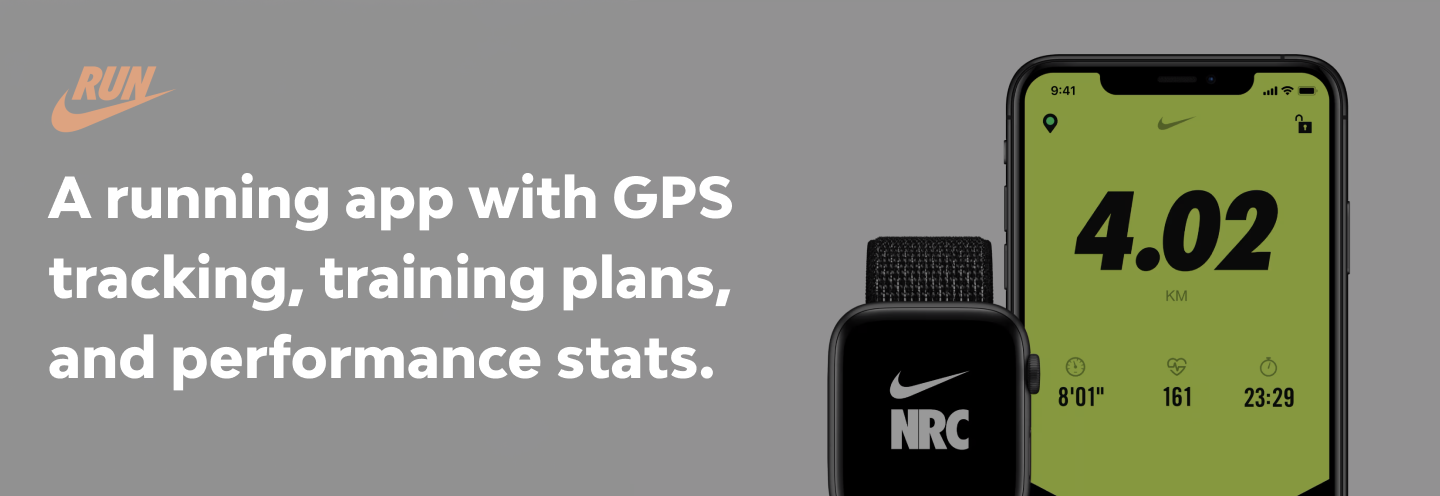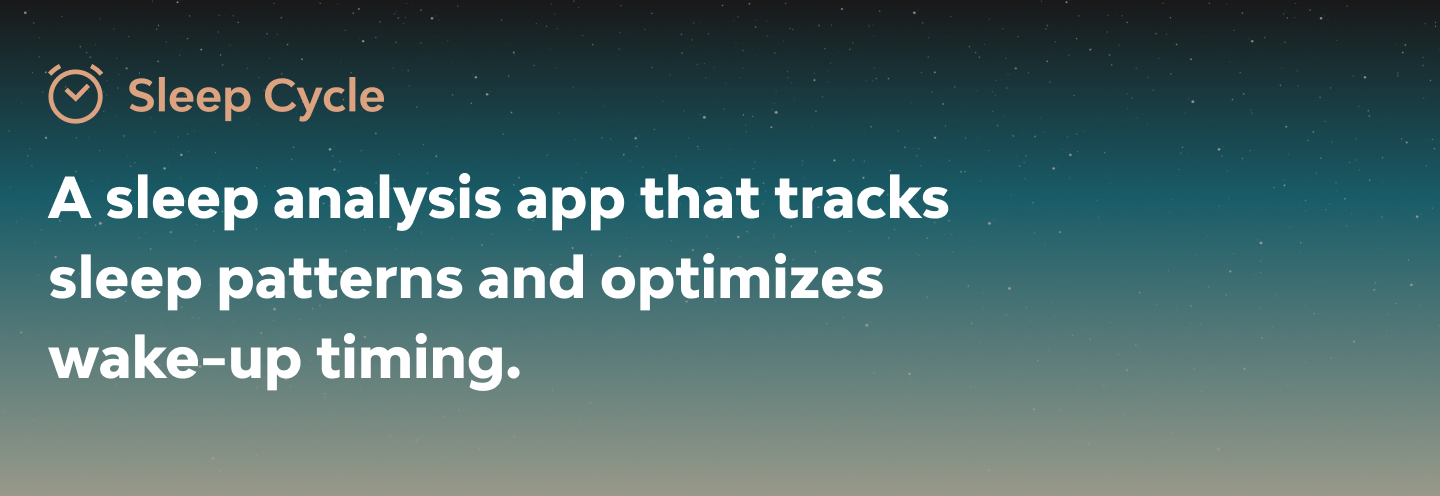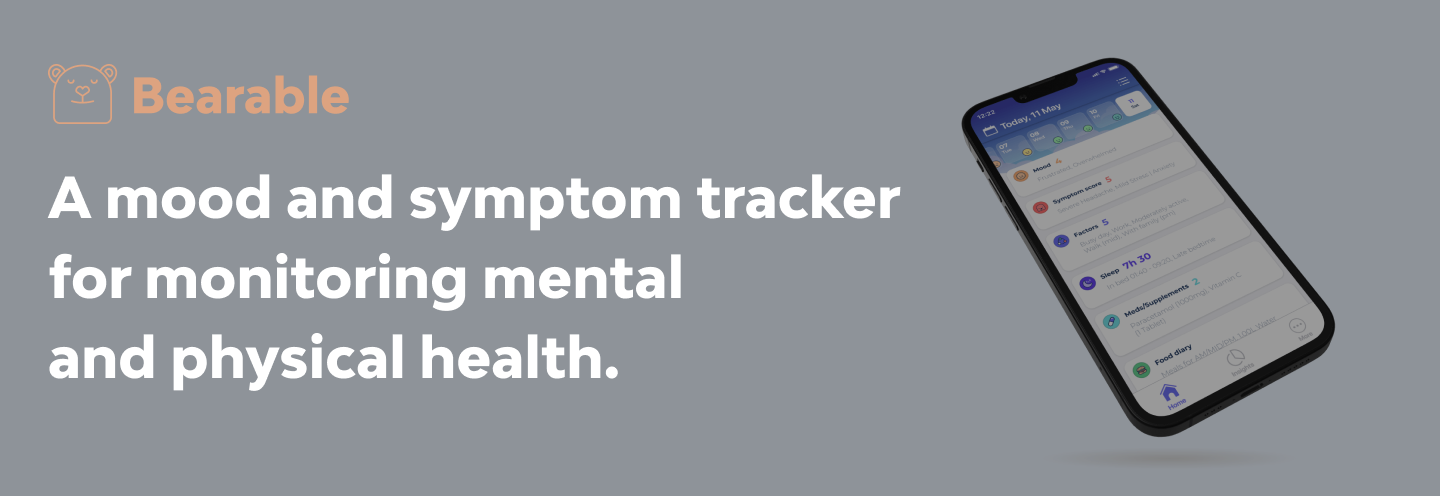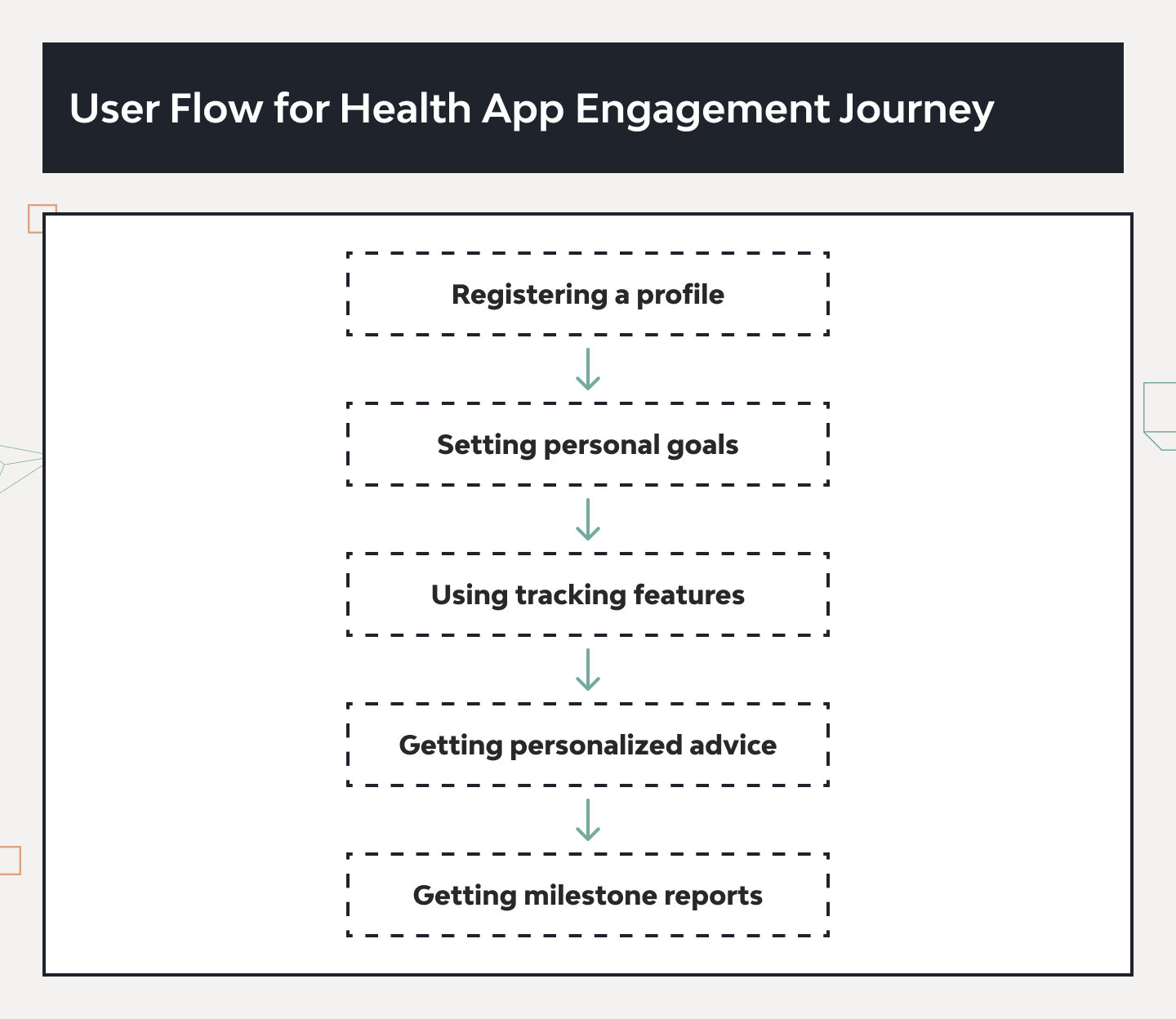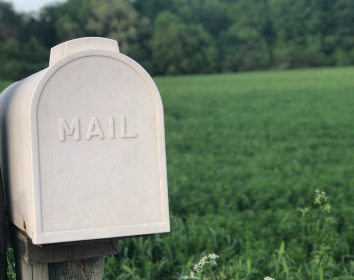A Guide to Personalized iOS HealthKit-based App Development
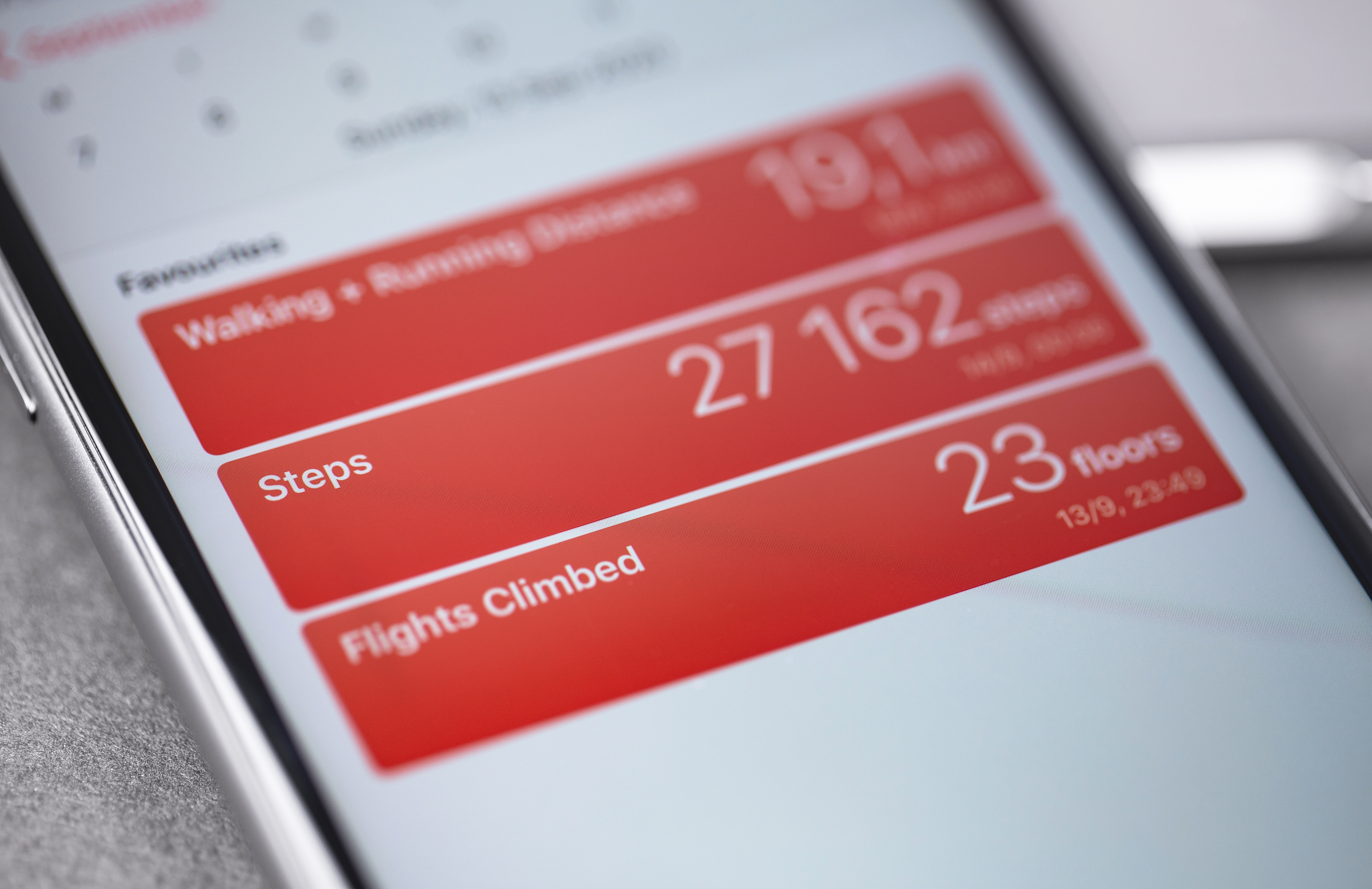
Fitness, health, and personalized lifestyle tracking apps form a $12-billion market segment that’s consistently expanding. It was only a matter of time before the community started creating frameworks and platforms tuned specifically for facilitated development of fitness and wellness apps.
For iOS, HealthKit came out as a centralized repository of Apple users’ health data, which allows to integrate relevant stats and metrics for a new app right away, removing the need to gather all the baseline data anew every time.
What is HealthKit? Why choose HealthKit for your specific implementations? What does building a HealthKit app entail? We’ll figure out all this and more in this deep dive into the HealthKit-based app development.
What Is Apple HealthKit and Why Use It for Your App
Fitness and wellness apps have long formed a niche of their own. Apple’s HealthKit is the result of the accumulation of such apps in the iOS ecosystem. With so many lifestyle solutions in the store, Apple started aggregating huge flows of personal health metrics — steps, sleep patterns, and all sorts of vitals that Apple users are tracking daily.
Vast amounts of data are coming in from a huge audience of iPhone, Apple Watch, and iPad owners. HealthKit was created to centralize this data inside a single dedicated ecosystem. This centralized data hub can now be easily integrated with a new app to provide the metrics and other required data.
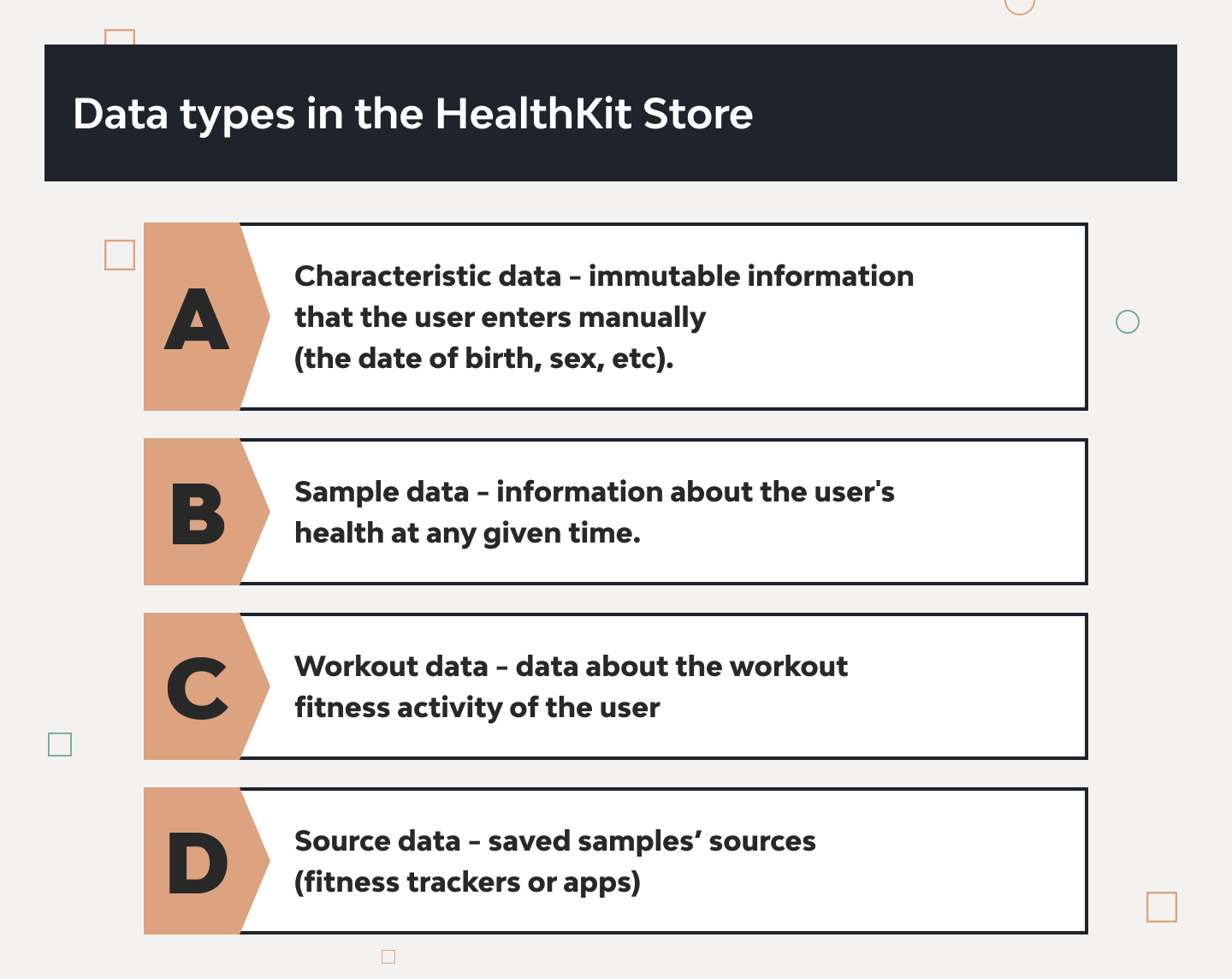
As such, HealthKit-based app development allows healthcare companies and startups to build a fitness/wellness application for iOS devices that would right away have all the baseline health data fed to it.
All that translates into the following benefits of HealthKit:
- Centralized data access
HealthKit aggregates data from multiple sources into a single, accessible hub. This means your app can pull consistent, reliable information — be it from an Apple Watch, iPhone, or other certified devices. In the long term, this is a proven way to cut development complexity and boost data accuracy. - Seamless ecosystem integration
With native integration across Apple’s hardware and software, HealthKit helps achieve smooth interoperability and provide versatile omnichannel user experiences. The tight coupling of apps and devices combined with access to Apple’s vast health ecosystem makes building a high-quality, standout fitness app so much simpler to kick off and manage. - Built-in trust and privacy controls
HealthKit’s granular permission management allows you to control exactly which data types an app can access. This helps make sure that personal health information can only be shared after the explicit consent. On top of that, all the health data managed through HealthKit is encrypted both at rest and in transit, safeguarding from unauthorized access.
Being the offspring of Apple, the HealthKit framework is also extra reliable when it comes to privacy regulations. Developers don’t have to bother all that much with sourcing all the input data their app needs. They also don’t need to authorize manually where it comes from, as HealthKit provides a single data source that’s already compliant with HIPAA, GDPR, and other regional laws.
This trust, combined with the ability to source invaluable data, is why many forward-thinking healthcare companies and wellness projects choose HealthKit as the foundation for their health-focused applications.
What Kinds of Apps Can You Build with Apple HealthKit?
HealthKit is a rich data source that can power a range of different solutions related to wellness and health, sports and fitness, or other lifestyle niche apps. To give you a clearer picture of how HealthKit works in action, here are the most common types of solutions you can create with its help, along with some real-world HealthKit app examples.
Fitness companion apps
Beyond simply tracking steps or providing notes to put down your weight reports, fitness companion apps can tailor workout regimes based on historical performance data. HealthKit will provide exactly this data. For example, an app might analyze heart rate variability, juxtapose it with available recovery metrics, and dynamically adjust exercise intensity for truly individualized training.
Example:
A widely used app featuring customizable guided workouts, training plans, and performance tracking that adapts to your personal fitness level. Nike Training Club integrates with HealthKit to import workout metrics (such as pace, distance, and heart rate) from Apple Watch and iPhone. This seamless data exchange allows users to track their running performance and progress over time.
Sleep coaching solutions
Apple HealthKit integration can also provide real-time data on sleep cycles and disruptions of the user. When sourced to a special tracking/coaching app, this data can help pinpoint exactly what is affecting one’s rest quality and suggest personalized routines and ways to improve sleep patterns. Such a system learns over weeks, gradually refining its advice as it “understands” your body’s rhythms.
Example:
This app employs sound analysis to track your sleep phases and gently wakes you during your lightest sleep phase. Sleep Cycle uses HealthKit to record and analyze sleep data. By syncing sleep phase information from the centralized hub, it provides personalized coaching and gentle wake-up features based on the user’s rest quality.
Mood tracker and behavioral health apps
By correlating physical activity, heart rate trends, and even sleep irregularities with user-input mood data, developers can create apps that monitor mental well-being and provide contextual advice. Like some relaxation guidance and mindfulness exercises triggered by early signs of stress.
Example:
Bearable is a health tracker that lets you log symptoms, mood, sleep, and medications, helping to uncover patterns and manage chronic conditions. The app integrates with HealthKit to combine user-entered mood and symptom logs with objective data — like activity levels and sleep patterns. This juxtaposition analysis identifies correlations between their lifestyle and emotional well-being.
Health journaling platforms
There are also feature-rich health journal apps that go beyond simple daily logs. They analyze trends over time, point out correlations between lifestyle choices and health outcomes, and suggest personal plans of action. Such apps enable users to see a narrative of their health — a personal dashboard that tells the story of their well-being.
Example:
Designed as a health diary, CareClinic supports users in tracking daily symptoms, medications, and activities to improve overall wellness management. The app leverages HealthKit to pull in data such as exercise, sleep, and vital signs, allowing users to maintain detailed health journals.
A Step-by-Step Plan to Build the App with Apple HealthKit
You can now pick a development scenario for your own new HealthKit app. The process will vary depending on your goals and capacities. But for the best results, you should keep things consistent and go step by step. The essential steps will include the following.
#1 Define your audience and ultimate goals
What user audience do you target and which iOS HealthKit features can match and solve their pain points exactly? Depending on the TA preferences, the app’s user-facing goals can range from improved sleep to higher energy levels to better stress management.
It’s best to put it all down in a separate plan sheet — write down concepts and objectives from big to small, then try to prioritize and structure them.
Here’s an example of the draft you can make for a sleep tracking app:
Target audience:
- Young professionals (ages 25-40) with demanding work schedules
- Individuals experiencing chronic fatigue, stress, or disrupted sleep patterns
- Mobile device users who try apps for personal health management
Related pains:
- Inconsistent sleep patterns and difficulty falling or staying asleep
- Uncertainty about how daily habits (e.g., screen time, caffeine intake) affect sleep quality
- Lack of personalized, actionable sleep improvement advice
- Frustration with generic sleep tracking apps that don’t adapt to individual needs
#2 Identify required HealthKit data
To start using HealthKit for fitness tracking or processing any other metrics, you must also determine which exact metrics or types of data your app will need to source. In particular, you will need the data that will help you enable personalized user experiences.
The available HealthKit data types you can pick from for your app may include:
- Activity metrics
-
- Step count, distance traveled, active energy burned, and flights climbed.
- Workout duration, calories burned, and heart rate dynamics.
- Vital signs
- Heart rate, blood pressure, body temperature, and respiratory rate.
- Heart rhythm, electrical activity, and other ECG readings.
- Body measurements
- Weight, body mass index (BMI), body fat percentage, etc.
- Sleep analysis
-
- Duration of sleep, sleep quality, and sleep phases (e.g., deep/light sleep).
- Reproductive health
- Menstrual cycle tracking, ovulation predictions, and fertility metrics.
- Nutrition data
-
- Caloric intake, water consumption, and macronutrient information.
Developers can also define custom types to track specialized health metrics not covered by the standard HealthKit data types. For mood tracking, the sourced types should be combined with the available user input.
#3 Map a simple user flow
Make a rough sketch of the desired user journey — what exactly should they expect to go through when launching your app?
Here’s an example:
Outline the journey from app onboarding and goal setting to receiving progress feedback. This will be something for designers and developers to expand upon when implementing your new app.
#4 Assemble a development team
If you don’t already have a team, you’ll need to hire HealthKit developers and other necessary specialists for the project. When choosing a HealthKit partner, you may also need to decide — to assemble an in-house team or turn to outsourced services.
When making the final decision, keep in mind:
- In-house teams can require more resources to assemble and efforts to manage, but stick with you in the long run and remain dedicated to the common goal.
- Outsourced specialists can be contracted when you don’t have/need an in-house team, allowing you to “rent” the required skills for the time being.
While companies commonly outsource short-term tasks and workflow gaps, this model can help save costs in the long term, too. Without a strict, irreplaceable need for an in-house team, you don’t have to run and manage one.
#5 Plan your MVP
It’s always a good idea to test the waters with a minimal viable product. You can start wiring it up as soon as you get all of the above steps in check and have:
- a preliminary plan
- HealthKit data integration goals
- a user flow map
- a team of developers and designers
An MVP should have only the most basic features, which must be tested thoroughly in action and re-iterated until the most suitable, polished results are achieved. To pick the core features, you’ll need to consult with a development team.
#6 Picking features for an MVP
If we take our above example of a plan for a sleep tracking app, the respective features to implement for an MVP may include the following:
- Data integration with HealthKit
- sleep duration metrics
- sleep phases
- heart rate variability
- Personalized sleep coaching
- customized bedtime routines
- tips for reducing pre-sleep stress
- User engagement and feedback
- daily reminders and gentle notifications
- visual dashboards and trend analysis
- Additional functionalities
- A simple diary feature to log pre-sleep activities and moods
- Mindfulness or meditation sessions
#7 Launch timely
To keep things efficient, target a 4–6 month development cycle and prioritize early user testing. This should include doing a full HealthKit app overview at its MVP stage. Last but not least, make sure that you hire HealthKit developers who can handle most-release support and optimization.
Compliance, Risk & Security for Health Data
An official Apple product, HealthKit abstracts much of the heavy lifting in data security, taking tons of compliance worries off your shoulders. Still, if you want your app to go public and work with personal user data safely, regulatory frameworks like HIPAA, GDPR, PIPEDA, and FDA guidelines (for certain regulated products) must be integrated into your development roadmap from day one.
This is especially important if you are working on more complex and hospital-grade solutions. You can keep all regulations in check by doubling down on security compliance and taking steps like:
- Building a compliance roadmap: Make a regulatory requirements outline a part of the whole app’s development plan. This way, you embed privacy by design into your app’s core.
- Implementing consent architecture: Use HealthKit’s granular permission model to ask for only the data you need — when you need it. Also, clear, contextual prompts should be used to make users really take time and decide what they share.
- Adopting zero-trust policies: Architect your system to never assume inherent trust — continuously validate access requests and encrypt data both at rest and in transit.
Choosing the Right Development Strategy and Partner
To build a fitness or wellness app that’s high-quality, user-focused, scalable, and competitive all at once, you’ll need more than just coding talent. Your best bet is to partner up with a provider that brings in strategic vision and well-proven expertise.
Your perfect Health Kit app creation partner should be able to demonstrate:
- A solid track record with HealthKit integrations
- Deep understanding of healthcare regulations
- A focus on UX and long-term user engagement
What a Successful HealthKit App Needs Beyond Strong Tech
Technology is the backbone, but the soul of your app is defined by its ability to engage and inspire users. Here are elements that elevate a HealthKit app from merely functional to spot-on and memorable:
- Engaging UX: Convert raw health metrics into meaningful narratives. Visualizations of progress made over time for dynamic metrics exploration can help engage users better.
- Retention strategies: You can also gamify user progress with badges, streaks, and challenges that reward consistent healthy behavior. Personalized reminders additionally boost long-term engagement.
- Strategic partnerships: Collaborate with nutritionists, fitness experts, or even health insurers to add more levels of value to the app while also offering more ranged services to users.
Conclusion
Healthcare, fitness, and personal wellness apps aren’t expected to go out of trend. They help efficiently take care of the most precious thing anybody has — their health — simply by owning a smartphone, tablet, or wearable.
Hope this guide helps you start using HealthKit for fitness apps creation, as well as work on other new creations for managing and improving personal wellness.
We can help you create anything from one-screen apps to complex solutions for hospitals — you name it. Talk to us about your vision!
